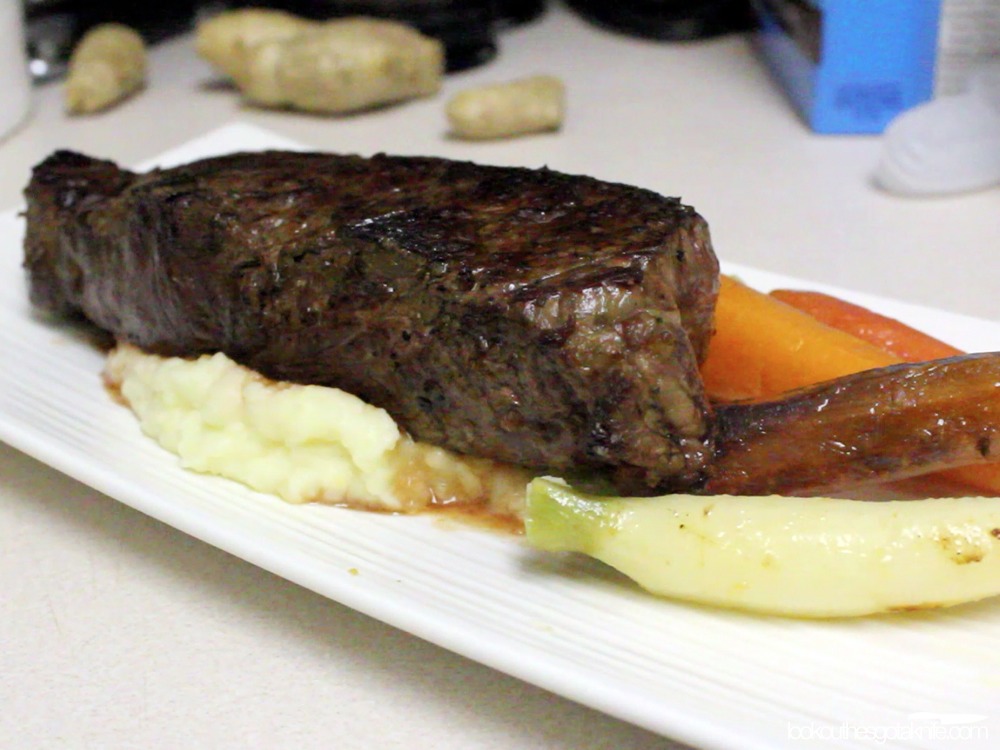The Five, Day 1 – Browning Meat.

August 7th, 2012
I love Food Republic, but they must be hard up for stories this week, because they put up a story called “Five Crucial Kitchen Techniques and How To Use Them“.
Going through the list, I disagree that—with the exception of shucking oysters— anything they listed can be called a technique.
Five essential techniques I’d say are more important, and seem difficult for many to master?
I’m going to spend the next five days going over five techniques that I feel are far more important to master.
Day 1: Browning meat.
Oh sure, everyone knows how to brown meat, right? Actually, in my experience, they don’t. Many seem to confuse “grey” with “brown”, most especially with ground meats.
All animals have a protein called myoglobin in their meat. Myoglobin is the meat analogue to the blood’s haemoglobin, which helps store oxygen in cells. It also gives meat a red colour to varying degrees, based on the animal and the type of muscle that the meat came from. Well used muscles, like leg muscles on a chicken or steer will contain more myoglobin than lesser used muscles like chicken breast or loin. But chickens in general contain less myoglobin than beef, which is why their meat is pink as opposed to red.
This is also what gives meat juices in rare to medium meats a red colour. It’s not blood. I repeat, it’s NOT BLOOD. Sorry, vampires.
Myoglobin changes colour and chemical structure when heated. When it’s heated beyond 60°C (140°F), it’s center iron molecule loses an electron and oxidizes, and in that reaction myoglobin becomes the tan-grey coloured hemichrome. Past 76°C (170°F), there’s very little unoxidized myoglobin left in meat, and this is what gives well-done beef it’s characteristic grey colour.
Unfortunately, this is no where near high enough temperature for browning (maillard and caramelization) reactions to occur. Generally 148°C (300°F) is required for typical maillard reaction browning to even start in meat.
Hence, that “greying” can occur even if you’re boiling meat in a pot of water. When a recipe calls for meat to be browned, it generally involves high heat, a pan quite a bit larger than your meat, and patience.
The large pan/small meat ratio should be at least 2:1. Meaning the surface area of the pan should be at minimum twice the size of the surface area of the meat that will be touching it. High heats will cause moisture to bleed out of your meat. Too much meat in a pan means there’s nowhere for any liquid lost to go and it remains trapped with your food. Essentially, you end up boiling your meat, as the trapped liquid will keep your maximum temperature in your pan around the 100°C (212°F) mark.
The higher heat helps keep internal moisture and promote browning before drying out the inside of the meat, as well as quickly evaporating off any liquid that may leak out.
If you’re cooking ground meats, you may need to use a larger pan-to-meat ratio of 3:1, as there’s significant cell damage and surface area to cause a great amount of liquid loss. Brown in batches, and recombine all cooked batches together near the end. Trust me, next time you make those ground beef tacos, your taste buds will thank you.
